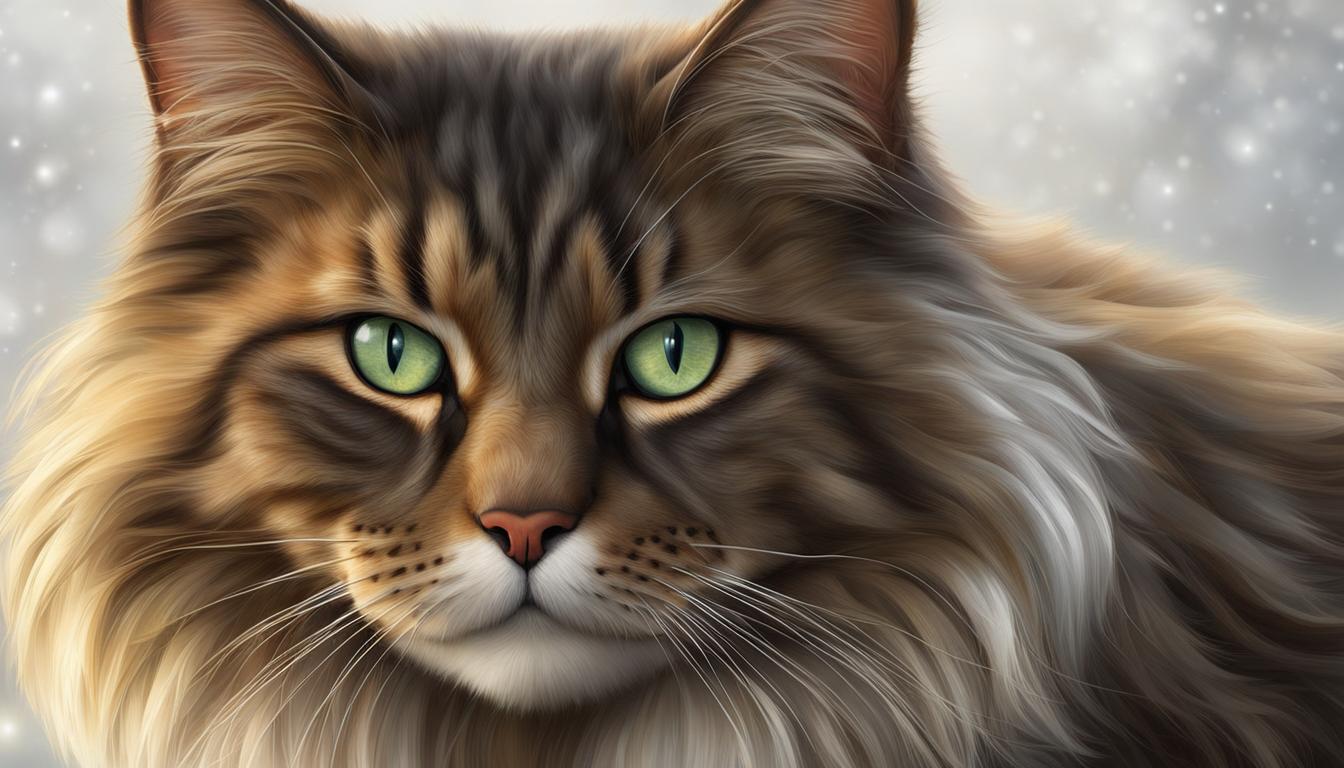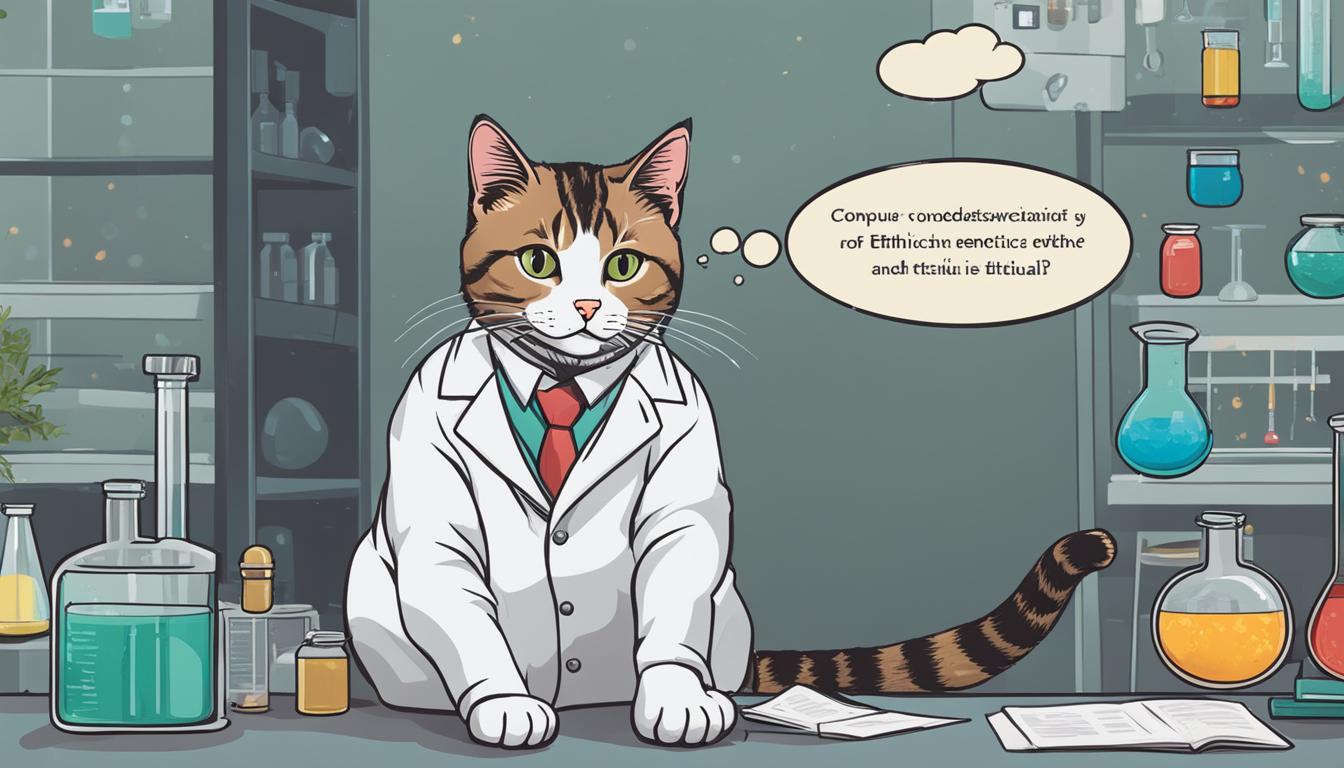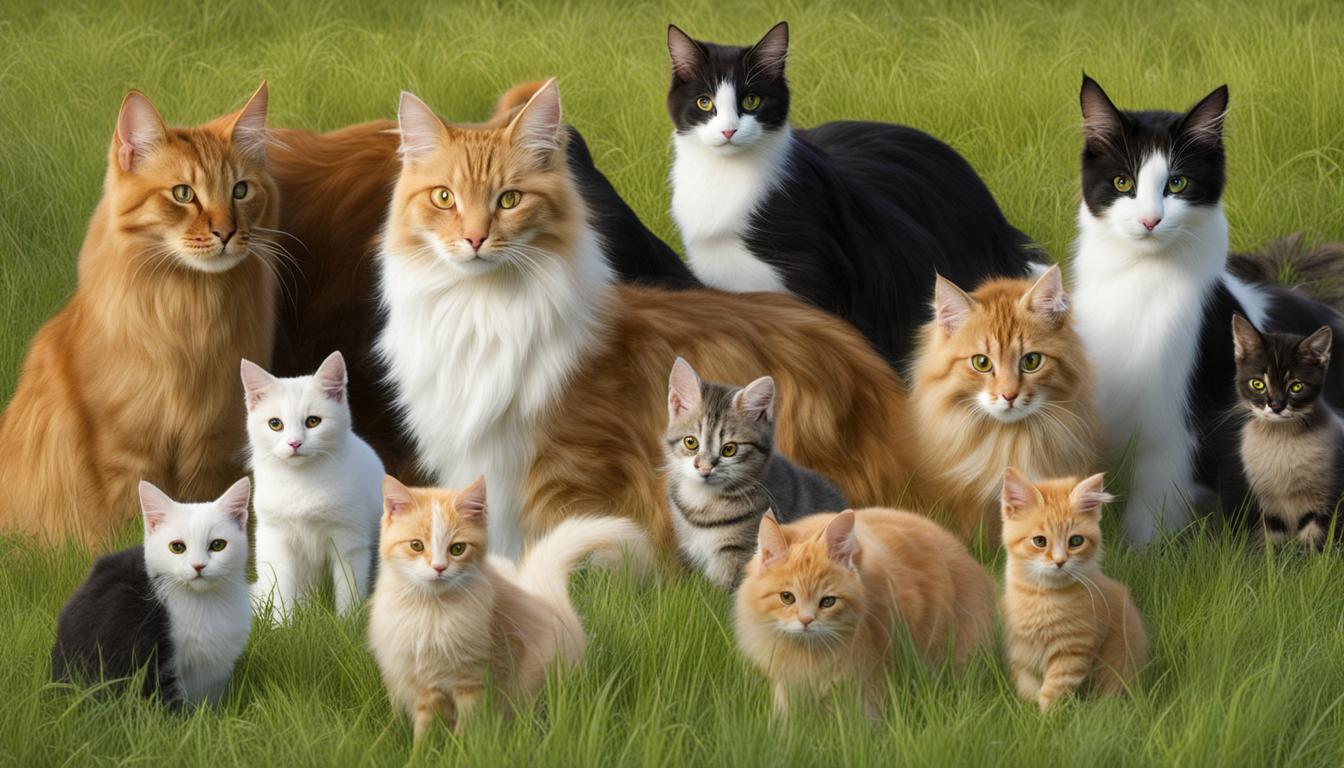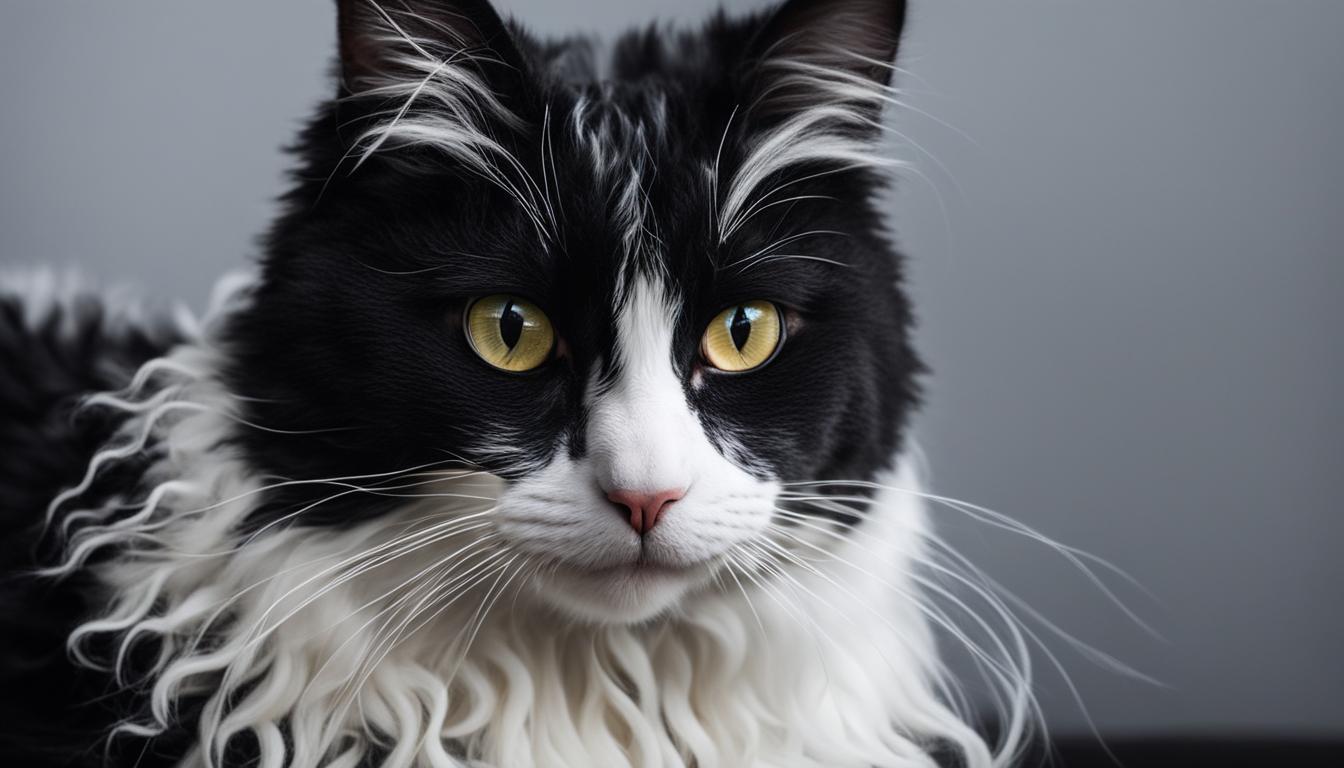Cats have been fascinating companions of humans for thousands of years. They come in different shapes, sizes, and colors, each with their own unique traits and characteristics. But have you ever wondered how these adorable feline creatures have evolved over time? Join me on a journey to explore the evolutionary history of cat breeds and discover the fascinating changes they have undergone through the ages.
Key Takeaways:
- Evidence suggests that domestication of cats began in the Middle East around 9,500 years ago.
- Genetic analysis has revealed that domestic cats have undergone significant genetic changes since their domestication.
- Physical traits of cat breeds have been shaped by both natural adaptation and selective breeding.
- Cats harbor various bacteria in their mouths, some of which can cause infections in humans.
- Cats and humans can share their microbiomes, diversifying and enriching their microbial communities.
Genetic Evolution of Domestic Cats
Genetic analysis has revealed fascinating insights into the evolution of domestic cats. Over time, domestic cats have undergone significant changes at the genetic level, resulting in variations in their physical traits and behavior. These genetic adaptations have played a crucial role in shaping the development of different cat breeds and their unique characteristics.
Studies on cat breed adaptation have identified more than 281 genes that have rapidly mutated throughout the evolutionary journey of domestic cats. These gene mutations have had a profound impact on various aspects of feline biology. For instance, genes responsible for cognition, danger identification, and response to rewards and commands have shifted cats from their wild counterparts to domesticated companions. These genes exhibit similarities to those found in humans and are associated with learning and memory.
Furthermore, genetic variations have influenced the migration of stem cells in developing embryos, leading to changes in physical traits such as brain size, hunting ability, and fur patterns. The evolution of fur patterns, including stripes and splotches, is influenced by specific gene mutations. The genetic changes in domestic cats highlight the intricate mechanisms that have shaped their evolution over time, allowing for diversity in appearance and behavior.
| Genetic Evolution of Domestic Cats | Impact |
|---|---|
| Changes in cognition genes | Affects learning, memory, and response to rewards and commands |
| Gene mutations affecting migration of stem cells | Alters physical traits such as brain size, hunting ability, and fur patterns |
| Evolution of fur patterns | Specific gene mutations contribute to different fur patterns, such as stripes and splotches |
Physical Evolution of Cat Breeds
The physical evolution of domestic cat breeds is a fascinating journey that showcases the adaptability and changes that have occurred over centuries. Through natural adaptation and selective breeding, different cat breeds have developed unique and distinct physical traits that set them apart from one another.
One of the key factors contributing to the physical evolution of cat breeds is their interaction with humans. Cats have evolved various communication methods to better communicate with their human companions. For example, the development of meowing and chattering as vocalizations is a result of the close bond between cats and humans. These vocalizations serve as a means of expressing their needs and emotions, effectively enhancing their ability to communicate with us.
Additionally, selective breeding has played a significant role in shaping the physical appearance of cat breeds. Breeders have focused on specific traits such as ear size, tail size, coat length, and fur color to create distinct breeds with unique characteristics. This intentional breeding has resulted in the differentiation of over 20 domestic cat breeds, each with its own set of physical traits.
It’s important to note that while selective breeding has led to the creation of new cat breeds, many breeds are derived from indigenous cats of their respective regions. Some recently developed breeds may not be distinct from their parental breeds, highlighting the ongoing nature of cat breed evolution.

The Influence of Selective Breeding
Selective breeding has been instrumental in shaping the physical characteristics of domestic cat breeds. Breeders carefully choose which cats to mate based on desired traits, resulting in the propagation of those traits in subsequent generations. This process has allowed for the development of breeds with specific features, such as the hairless Sphynx or the short-legged Munchkin.
Adaptation in Different Cat Breeds
Adaptation is another important aspect of the physical evolution of cat breeds. Different breeds have adapted to specific environments and lifestyles, influencing their physical traits. For example, breeds like the Maine Coon and Norwegian Forest Cat have developed long, thick fur to withstand cold climates, while breeds like the Siamese have a slender body type that allows for agile movement.
Changes in Cat Breeds over Centuries
The physical evolution of cat breeds has occurred gradually over centuries, driven by both natural selection and human intervention. As cats have become domesticated and interacted closely with humans, their physical traits have been influenced by the selective breeding choices made by breeders. These changes have resulted in the diverse range of cat breeds we see today, each with its own unique set of physical characteristics.
The Microbiome of Domestic Cats
When it comes to the fascinating world of domestic cats, their microbiome is an intriguing area of study. The microbiome refers to the community of microorganisms that live in and on an organism, and it plays a crucial role in the health and well-being of both cats and humans. In fact, cats have a complex microbiome in their mouths, which can have both positive and negative implications for their owners.
A common bacterium found in a cat’s mouth is Pasteurella multocida. While it poses no harm to cats, it can cause infections in humans. This bacterium is responsible for a significant number of staph infections and skin issues after a cat bite. Another bacterium, Bartonella henselae, is also commonly found in a cat’s mouth and can cause the “cat scratch disease” in humans. This disease can lead to swelling, redness, fever, and irritation. So, it’s essential to be aware of the potential risks associated with the bacteria in a cat’s mouth.
However, it’s not all bad news. Research has shown that cats and humans can share their microbiomes, providing potential benefits. Prolonged exposure to cats from a young age can lead to the sharing of nasal, intestinal, and skin microbiomes between cats and humans. This diversity and enrichment of the microbiome can have positive effects on both cats and humans, contributing to overall health and well-being.
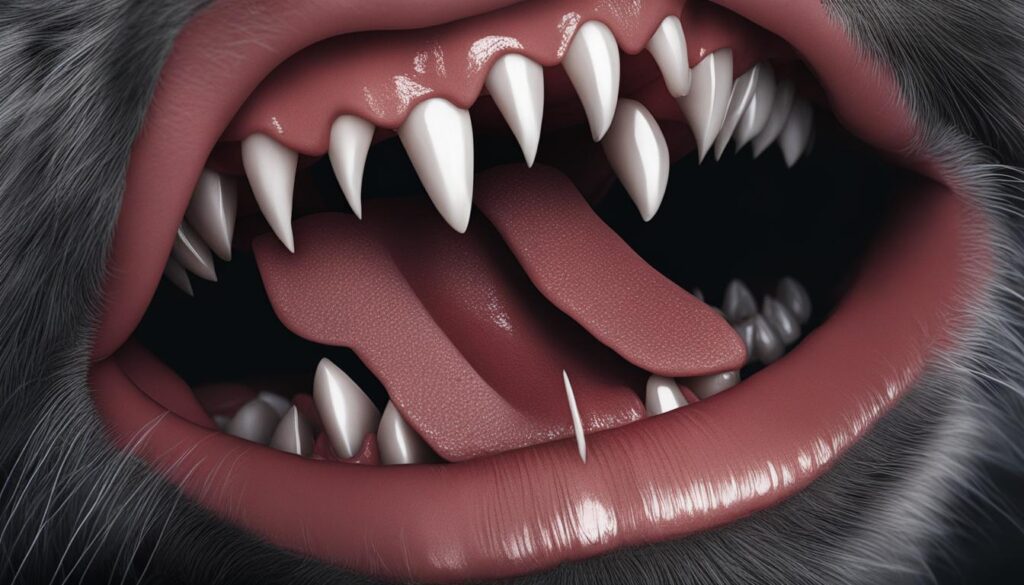
Understanding the microbiome of domestic cats is an ongoing field of research. It highlights the complex relationship between cats and their human companions, as well as the potential risks and benefits associated with sharing a living environment. By learning more about the microbiome, we can better understand and navigate the unique dynamics of this feline-human relationship.
Conclusion
Throughout history, the evolution of cat breeds has been a fascinating journey. From their origins in the Middle East 9,500 years ago to the present day, domestic cats have undergone remarkable genetic and physical changes.
The genetic evolution of domestic cats has left its mark on their cognitive abilities, fear response, and physical traits. These genetic variations, similar to those found in humans, have influenced cats’ learning, memory, and even their fur patterns. It’s incredible to think that these furry companions share such similarities with us.
But genetic changes aren’t the only factors shaping cat breeds. Selective breeding has played a significant role in the physical traits we see today. Breeders have meticulously crafted different coat lengths, colors, and even ear and tail sizes. The result is a diverse range of cat breeds, each with its unique characteristics.
And let’s not forget about the microbiome of domestic cats. While some bacteria in a cat’s mouth can cause infections in humans, cats and humans can also share their microbiomes. This sharing can lead to the enrichment of both cat and human microbiomes, creating a fascinating bond between species.
In conclusion, the history of cat breed evolution is a testament to the ever-changing nature of these incredible animals. Their genetic evolution, physical traits, and even their microbiomes continue to evolve and shape the future of feline evolution. As we continue to learn more about their journey, one thing is certain – cats will always captivate and inspire us.
FAQ
Were cats first domesticated by ancient Egyptians?
No, recent genetic and archaeological discoveries have revealed that domestication began in the Middle East around 9,500 years ago.
Where did domestic cats originate from?
Domestic cats originated from Middle Eastern wildcats, specifically Felis silvestris lybica.
When was the earliest evidence of humans keeping cats as pets found?
The earliest evidence of humans keeping cats as pets was found on the Mediterranean island of Cyprus, dating back to 9,500 years ago.
How have domestic cats genetically changed since their domestication?
Over 281 genes have rapidly mutated, affecting a cat’s hearing, metabolism, eyesight, and diet. Genes responsible for cognition, danger identification, fear, and response to rewards and commands have also shifted.
What physical traits have domestic cats developed through evolution?
Cats have evolved various physical traits to better communicate with humans, including the development of meowing and chattering as vocalizations. Selective breeding has also played a role in shaping the physical appearance of cat breeds.
What bacteria can be found in a cat’s mouth?
The mouth of a domestic cat harbors various bacteria, including Pasteurella multocida and Bartonella henselae.
Can cats transmit infections to humans through their bacteria?
Yes, bacteria found in a cat’s mouth can cause infections in humans, such as staph infections, skin issues, and the “cat scratch disease”.
Can cats and humans share their microbiomes?
Yes, research has shown that cats and humans can share their microbiomes, diversifying and enriching them. Prolonged exposure to cats from a young age can lead to the sharing of nasal, intestinal, and skin microbiomes between cats and humans.

